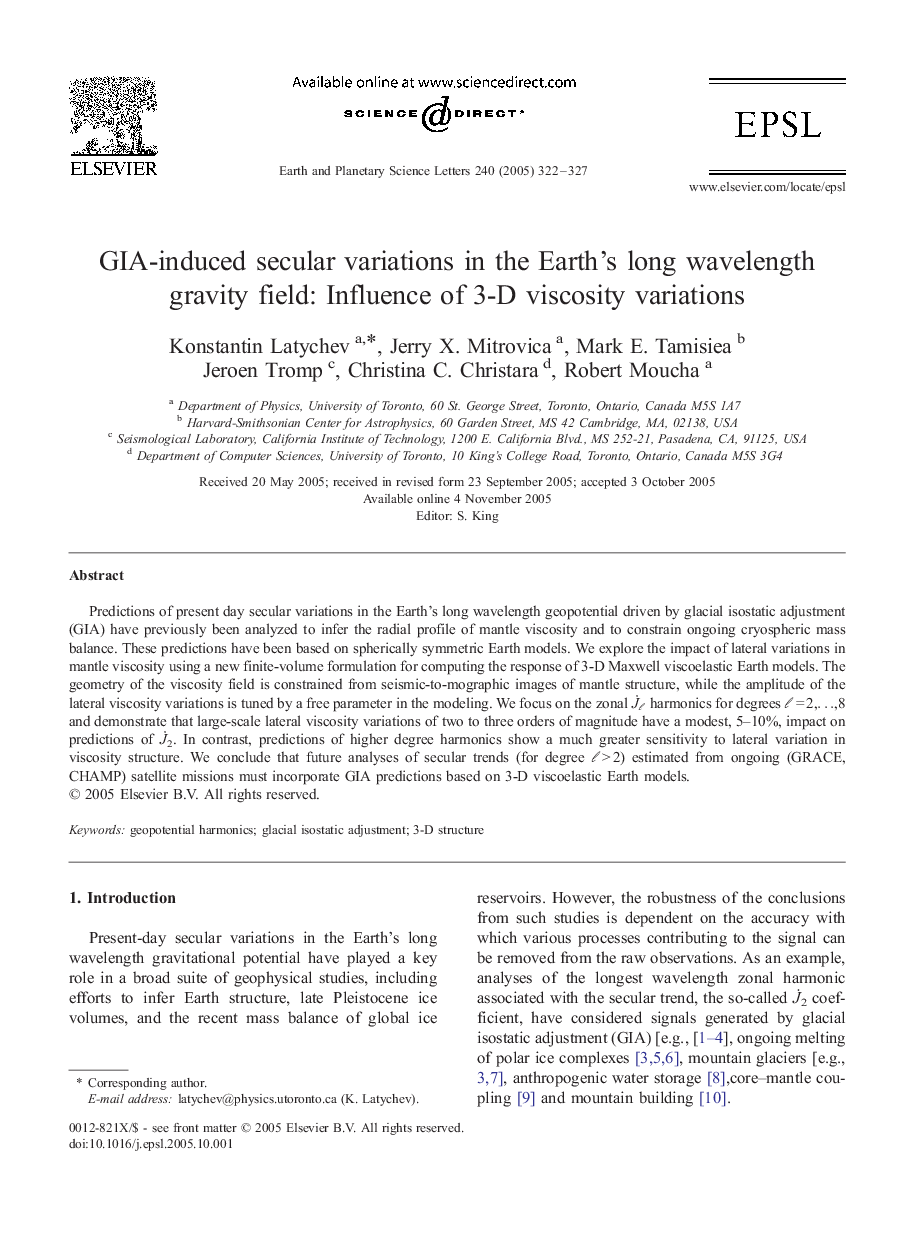| Article ID | Journal | Published Year | Pages | File Type |
|---|---|---|---|---|
| 9522240 | Earth and Planetary Science Letters | 2005 | 6 Pages |
Abstract
Predictions of present day secular variations in the Earth's long wavelength geopotential driven by glacial isostatic adjustment (GIA) have previously been analyzed to infer the radial profile of mantle viscosity and to constrain ongoing cryospheric mass balance. These predictions have been based on spherically symmetric Earth models. We explore the impact of lateral variations in mantle viscosity using a new finite-volume formulation for computing the response of 3-D Maxwell viscoelastic Earth models. The geometry of the viscosity field is constrained from seismic-to-mographic images of mantle structure, while the amplitude of the lateral viscosity variations is tuned by a free parameter in the modeling. We focus on the zonal JËâ harmonics for degrees â = 2,â¦,8 and demonstrate that large-scale lateral viscosity variations of two to three orders of magnitude have a modest, 5-10%, impact on predictions of JË2. In contrast, predictions of higher degree harmonics show a much greater sensitivity to lateral variation in viscosity structure. We conclude that future analyses of secular trends (for degree â > 2) estimated from ongoing (GRACE, CHAMP) satellite missions must incorporate GIA predictions based on 3-D viscoelastic Earth models.
Related Topics
Physical Sciences and Engineering
Earth and Planetary Sciences
Earth and Planetary Sciences (General)
Authors
Konstantin Latychev, Jerry X. Mitrovica, Mark E. Tamisiea, Jeroen Tromp, Christina C. Christara, Robert Moucha,
